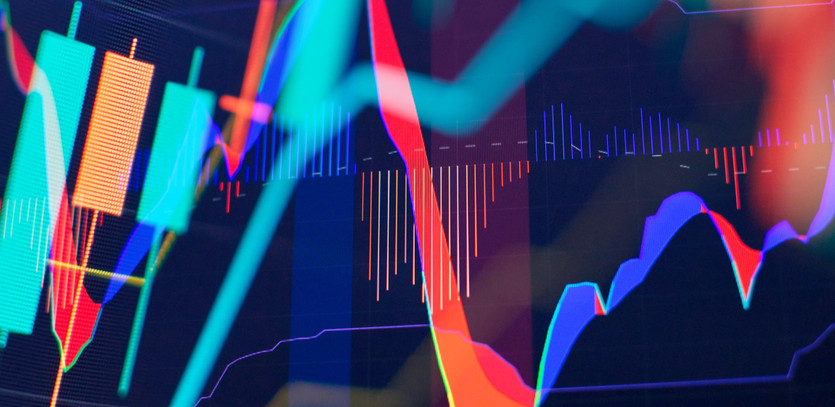The Schaff Trend Cycle (STC) - A Comprehensive Introduction
Emerging from the arsenal of technical analysis tools, the Schaff Trend Cycle (STC) proves to be a reliable ally for traders. This powerful indicator, developed by Doug Schaff, extends beyond the realm of traditional moving averages to incorporate cycle analysis into its methodology, further refining trend identification and trading signal issuance.
At the core of the STC is the unique combination of calculating both trend intensity and the velocity of price changes. This duality grants it the status of an oscillator, a specialized tool that gauges the momentum or speed of price fluctuations.
Typically, the STC computation involves a two-step process. The first step entails the extraction of the 23-period exponential moving average (EMA) from the 50-period EMA. The subsequent step involves smoothing the resulting value with a 10-period moving average (MA).
This calculated STC fluctuates within a range of 0 to 100. In general trading practice, values surpassing 50 signal an upward trend or a bullish market, while values descending below 50 denote a downward trend or bearish market.
Principal Insights
- Harnessing the power of both trend identification and cycle analysis, the Schaff Trend Cycle (STC) establishes itself as a versatile technical analysis tool that significantly enhances the accuracy of trading signals.
- Compared to traditional Moving Averages and occasionally even the MACD, the STC provides a more responsive and refined depiction of market trends, owing to its intricate yet informative methodology.
- The underlying strength of the STC rests in its distinct algorithm that strategically combines cycle analysis with the employment of multiple moving averages.
Unraveling the Moving Average Convergence Divergence (MACD) Indicator
Commanding a significant position in the toolkits of traders and investors alike, the Moving Average Convergence Divergence (MACD) indicator is a renowned technical analysis tool. The MACD, brought into existence by Gerald Appel, is instrumental in identifying potential trend reversals, issuing buy or sell signals, and assessing the intensity of a prevailing trend. It sees extensive application across various financial markets.
The MACD calculation is a relatively simple process. It involves the subtraction of the 26-period EMA from the 12-period EMA, resulting in what is known as the MACD line. Further, a 9-period EMA of the MACD line generates the signal line. This signal line, once overlaid onto the MACD line, serves as a trigger for the issuance of buy or sell signals.
Parallels and Disparities - Comparing the STC and MACD
The STC and MACD exhibit several similarities in their construction and application, while simultaneously displaying some key contrasts.
STC and MACD - Parallels
The STC and MACD share common ground in several respects:
- Both employ MAs in their core calculations.
- They primarily serve the purpose of identifying price trends.
- As oscillating indicators, they feature signal lines that generate trading signals.
- Trading signals arise from crossovers between the indicator and signal lines in both models.
- Each provides valuable insights into potential overbought and oversold conditions.
STC and MACD - Disparities
- Calculation Method: While the MACD calculates the difference between two EMAs, the STC integrates EMAs with cycle analysis for value derivation.
- Overbought and Oversold Levels: The MACD and STC operate with varying definitions of overbought and oversold market conditions.
- Trend Cycle Emphasis: The STC lays a heavier emphasis on identifying and tracking trend cycles, thus offering a smoother depiction of price trends.
- Interpretation and Application: Traders may exhibit a preference for one over the other owing to differences in trend identification abilities, signal generation, and application under different market scenarios.
Practical Trading Applications of STC and MACD
In the world of trading, both the STC and MACD serve a myriad of uses, ranging from identifying trends and spotting overbought/oversold conditions, to generating concrete buy and sell signals.
When it comes to the STC, factors such as the fast period, the slow period, and the smoothing parameter prove critical in the calculation. On the other hand, the MACD calculation revolves around parameters like the fast period, the slow period, and the signal period.
A practical example of using both STC and MACD on a USD/JPY forex cross 15-minute chart shows the MACD generating twice as many signals as the STC. Despite this, the STC produced smoother and generally more profitable signals than the MACD.
The Benefits and Drawbacks of the STC and MACD
Each of the STC and MACD harbors unique advantages and challenges.
The STC shines in its ability to identify trends more smoothly and responsively than traditional MAs and even incorporates cycle analysis. This inclusion assists in the detection of cyclical patterns and possible trend reversals. However, the complex nature of STC and its potential to generate false signals pose as limitations.
The MACD, on the other hand, is highly effective in determining the direction and strength of a trend. It also excels in spotting price and indicator divergences. Its wide applicability across different markets and timeframes adds to its merits. However, its characteristics as a lagging indicator and the possibility of producing false signals are its major drawbacks.
Other Technical Analysis Indicators Sharing Similar Traits
Several other technical analysis indicators share attributes with both the STC and the MACD. Notable among these are the Stochastic Oscillator, the Average Directional Index (ADX), and the Detrended Price Oscillator (DPO).
Concluding Remarks
The STC stands out in the realm of technical analysis indicators, primarily due to its innovative blending of cycle analysis with moving averages. This unique blend allows the STC to detect market trends and possible reversals with unprecedented precision. On the other hand, the MACD, relying on the difference between two MAs, uses crossover signals to suggest potential buying or selling opportunities. These two indicators, despite their differences, serve as invaluable tools for traders in their mission to predict market trends and foresee possible reversals. However, their distinctive calculation processes and individual characteristics suggest that each should be utilized wisely and contextually within a trader's strategy.





